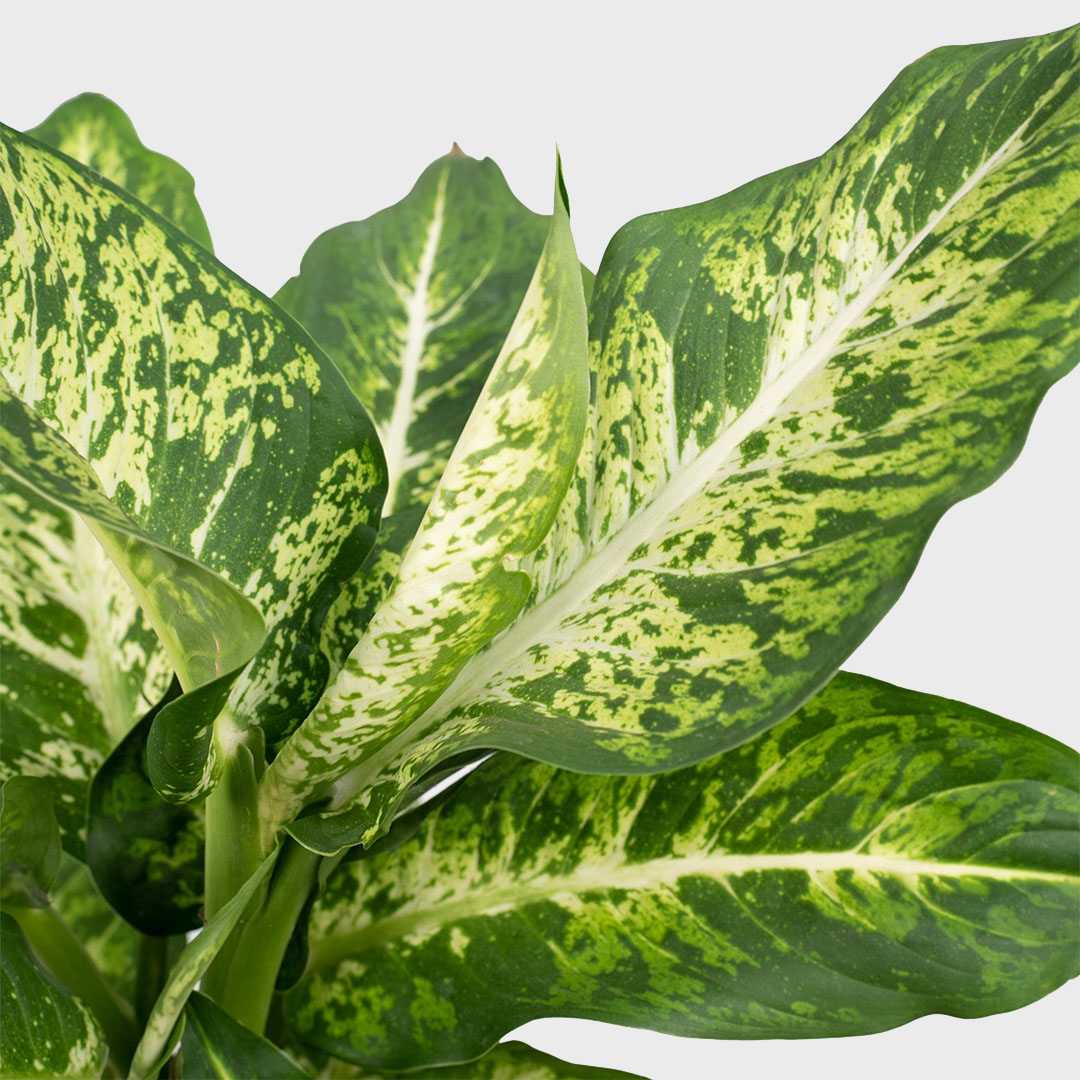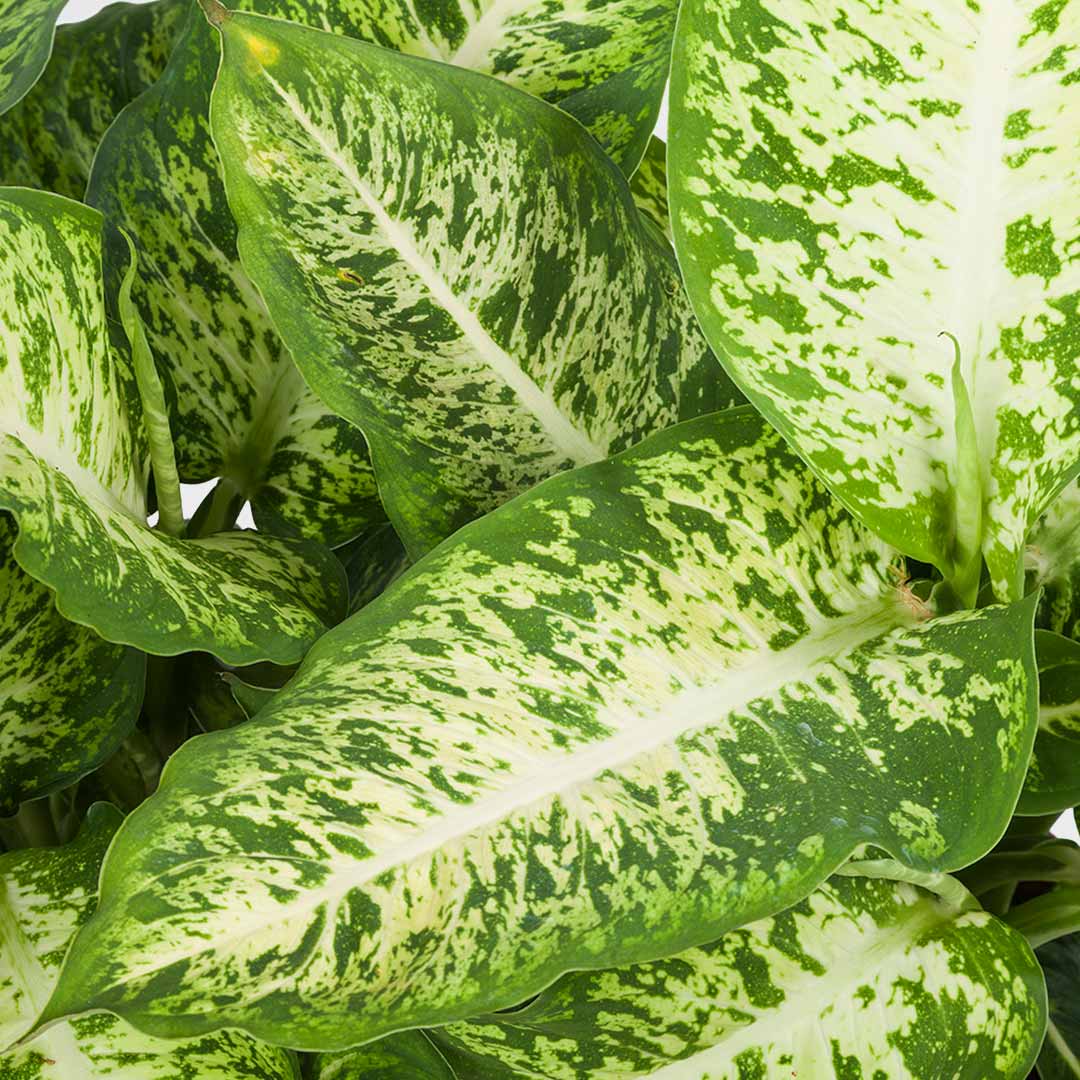
Deliver to
Europe
 English
English

The Dieffenbachia is an excellent choice for beginners since it is straightforward to grow and take care of. This plant has broad, lush leaves that are a combination of green, yellow, and white. Adding the Dieffenbachia to your space will instantly give it a tropical feel. Additionally, this plant grows quickly too.
Medium light
Water once a week
Toxic
Air-purifying
The Alocasia likes to be placed in a spot with lots of light. Not all species tolerate bright light well. It is best to place the plant in medium bright light. The Alocasia prefers a spot next to a window on the west or east. A spot near the south is of course also possible. Make sure that the plant is at least 2 metres away from the window. A spot near the north probably has too little light.
If an Alocasia gets too little sunlight, the plant will grow long stems. With its long stems the plant hopes to reach the sunlight. This can be crucial for the plant. Because of the long stems the leaves can become too heavy and break off.
Therefore, don’t forget to turn the Alocasia! The plant grows towards the sun. If you do not rotate the plant will only get full on one side and that is what you want to prevent.
It is important to always keep the soil of the Dieffenbachia slightly moist. You can check this with your finger in the soil. Never let the Diefffenbachia dry out. Not even in winter! It is best to water the Dieffenbachia once a week all year round. In the winter it may be a smaller amount. When watering the Dieffenbachia plant, one thing to keep in mind is not to overwater it. Overwatering can ruin leaves of the Dieffenbachia, causing them to become limp or developing root rot.
The Dieffenbachia doesn't use a lot of energy. However, the plant can enjoy some extra nutrients. You can provide these nutrients some plant nutrition every 2 week. We recommend to divide the strength of the plant nutrition in half. After autumn and in winter it is better not to give extra nutrients. In the autumn, plant nutrition can actually be harmful for the Dieffenbachia!
Repotting the Dieffenbachia isn't necessary every year. The plant is a slow grower. Repotting the plant every 2 year gives enough nutrients and more room for root growth. The airier soil is also very good for the water flowing through. The best period to repot is spring.
The ideal temperature range for Dieffenbachia plants is typically between 18 to 24 degrees Celsius. However, a Dieffenbachia can tolerate temperatures slightly higher or lower within certain limits.
Dieffenbachia plants, also known as Dumb Cane, typically do not require regular pruning for their overall health and growth. These plants have a bushy and upright growth habit and can thrive without extensive pruning.
If the air is too dry, the Dieffenbachia can suffer from mealy bugs. To prevent mealy bugs, it is best to use the plant sprayer once a week. Mealy bugs are an infection on plants. You can recognise the infection by infected leaves and a kind of cobwebs. If you have come across mealy bugs, it is best to place the plant outside. Wind and moisture from outside will quickly keep the mealy bugs away.


If the Dieffenbachia develops yellow leaves, this is usually due to too much light. However, it is also possible that the Dieffenbachia is suffering from root rot. If the stem of the plant feels soft, then this, in combination with yellow leaves, could be root rot. In this case, reduce the watering.
Dieffenbachias are compact and often small plants. A Dieffenbachia can grow to a maximum of 180 cm, but you will need to be patient.
Yes, you certainly can. Check out our tips on how to propagate the Dieffenbachia.